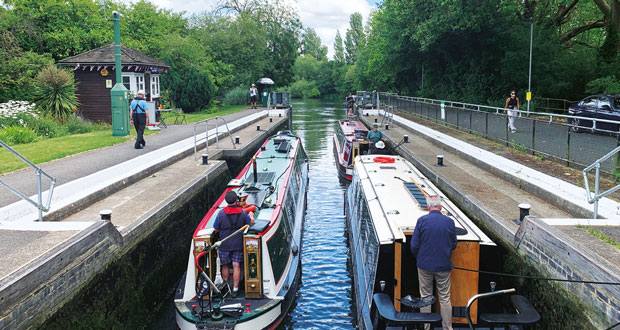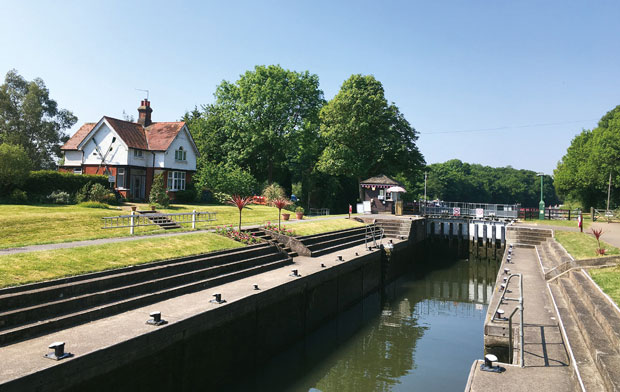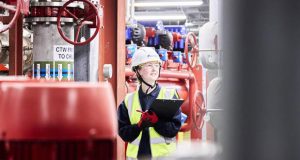The work being done by the estates team at the Environment Agency at the lock keeper houses on the River Thames is benefiting occupants and the environment. Sara Bean reports
The Environment Agency (EA) plays a pivotal role in supporting sustainable development in the UK. It works with businesses and other organisations to manage the use of resources, helps to reduce the risk of flooding and coastal erosion, protects and improves water, land and biodiversity and supports sustainable growth.
In 2019 the EA set out its commitment to become a net zero organisation by 2030, through reducing carbon emissions by 45 per cent and offsetting the remaining 55 per cent. Following changes to the Science Based Targets (SBTi) which define and promote best practice in emissions reductions and net zero targets the EA recently refreshed its net zero targets.
While the 2030 target to reduce emissions by 45 per cent remains, in-line with the latest thinking, the EA are focussing on further reduction instead of offsetting and have set an additional target of taking the reduction up from 45 per cent to 90 per cent by 2045-2050. The remaining 10 per cent will still need to be offset, but will be achieved through their own projects.
Said Simon Dawes, EA Head of Net Zero & Circular Economy: “We want to lead the way, so we will share our experiences to help others reduce their own emissions. We want to collaborate and partner with others to amplify our impact. We’ve a comprehensive roadmap to reach our near-term target that commits us to taking real, tangible actions across the whole business. Our carbon literacy training is enabling us as individuals and as an organisation to reduce our carbon footprint and deliver better outcomes for both people and nature.”
EA ESTATES TEAM
This philosophy is being applied to its own estates. The EA owns and manages a considerable portfolio of corporate and operational property, maintaining over £40 million worth of assets via a national team of technical specialists, surveyors, managers, advisors and support officers.
Explains Kathryn Forster, National Housing lead in the Environment Agency’s Estates team: “The estates team as a whole gets involved in variety of land issues. This could be a flood scheme, purchasing land, enabling access onto land for works or negotiating the sale of land.”
Among the EA’s huge property remit are 45 tenanted lock keeper houses and seven privately let houses on the River Thames. The houses, which were built between 1812 and 1986 are there to ensure lock keepers are on site to oversee the safe operation and management of key navigation assets on a 24/7 basis.
These buildings are the responsibility of the estates residential team who are tasked with ensuring the occupiers of these houses live in homes that are safe, secure, and sustainably managed, and of increasing importance, are equipped to meet impact of climate change.
Says Forster: “The EA own 77 houses across England, and 52 of those are along the Thames, of which 45 are lock keeper houses, which means they can be quite challenging to find and the access can be quite restrictive, which affects any sort of work that we do, including deliveries.
“Of the houses themselves, the oldest one was built in 1812 and the most recent in the 1980s. This means they’ve been constructed with the materials of the time and are not of modern thermal standards, for instance with solid wall construction. Being detached and sitting on an island, they are also very exposed to all weathers.
“They are usually off grid, which means that they are heated by LPG (liquid petroleum gas) or oil. Most struggle with water pressure in the summer, many are impacted by flooding, and not all are resilient to the changing climate.”
The estates team took over the management of the lock keeper houses in 2012. Forster, who joined at the end of 2015 has been working closely with the local EA management team to complete works on properties which so far, has resulted in savings of up to 17 tonnes of carbon emissions per year.
She says: “A lot of the houses hadn’t had significant work for quite some time, so we’ve been going through a period of catch up on the properties, replacing windows, mending roofs and installing greener forms of heating.”






